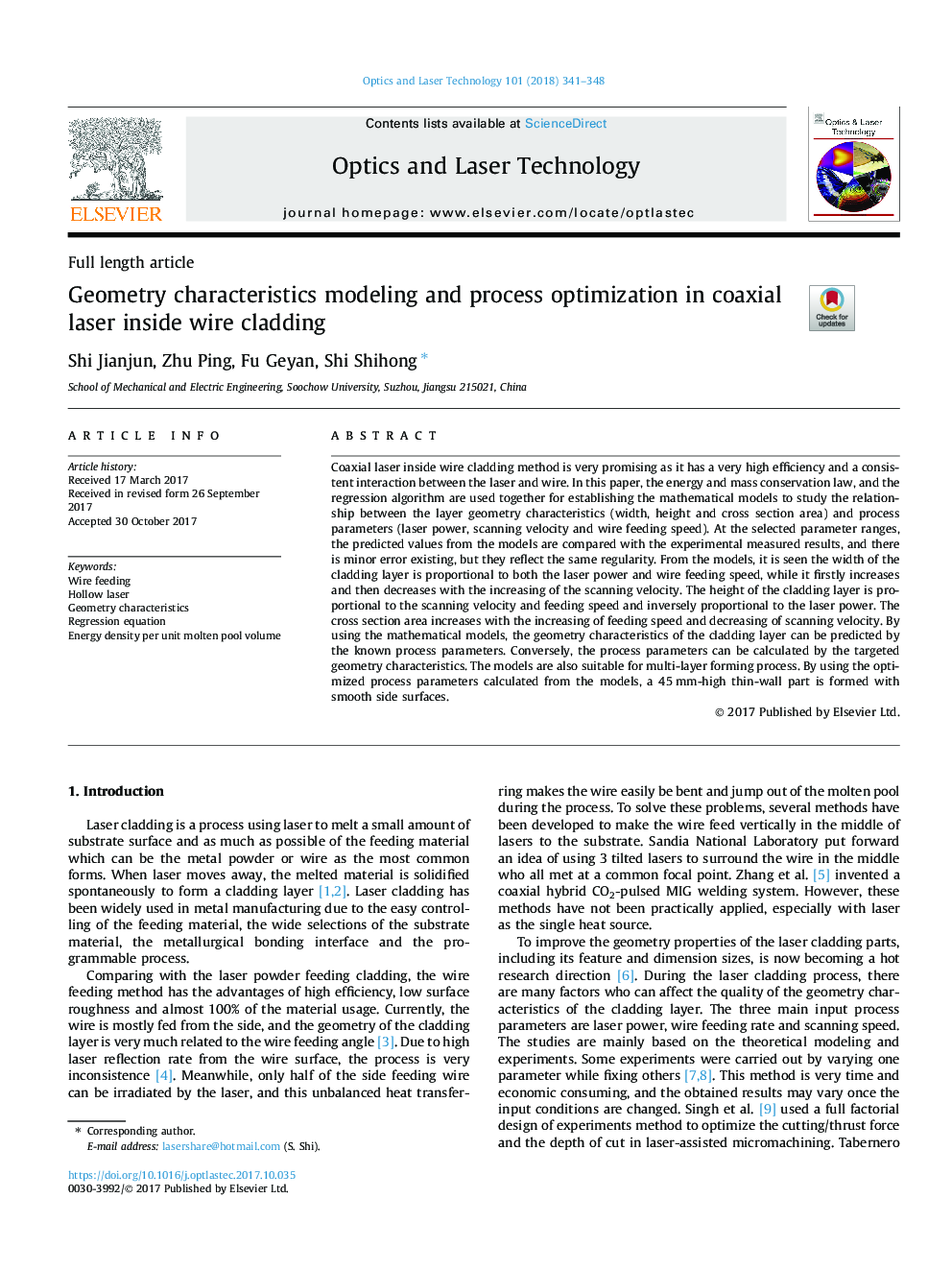| Article ID | Journal | Published Year | Pages | File Type |
|---|---|---|---|---|
| 7129459 | Optics & Laser Technology | 2018 | 8 Pages |
Abstract
Coaxial laser inside wire cladding method is very promising as it has a very high efficiency and a consistent interaction between the laser and wire. In this paper, the energy and mass conservation law, and the regression algorithm are used together for establishing the mathematical models to study the relationship between the layer geometry characteristics (width, height and cross section area) and process parameters (laser power, scanning velocity and wire feeding speed). At the selected parameter ranges, the predicted values from the models are compared with the experimental measured results, and there is minor error existing, but they reflect the same regularity. From the models, it is seen the width of the cladding layer is proportional to both the laser power and wire feeding speed, while it firstly increases and then decreases with the increasing of the scanning velocity. The height of the cladding layer is proportional to the scanning velocity and feeding speed and inversely proportional to the laser power. The cross section area increases with the increasing of feeding speed and decreasing of scanning velocity. By using the mathematical models, the geometry characteristics of the cladding layer can be predicted by the known process parameters. Conversely, the process parameters can be calculated by the targeted geometry characteristics. The models are also suitable for multi-layer forming process. By using the optimized process parameters calculated from the models, a 45â¯mm-high thin-wall part is formed with smooth side surfaces.
Keywords
Related Topics
Physical Sciences and Engineering
Engineering
Electrical and Electronic Engineering
Authors
Shi Jianjun, Zhu Ping, Fu Geyan, Shi Shihong,
